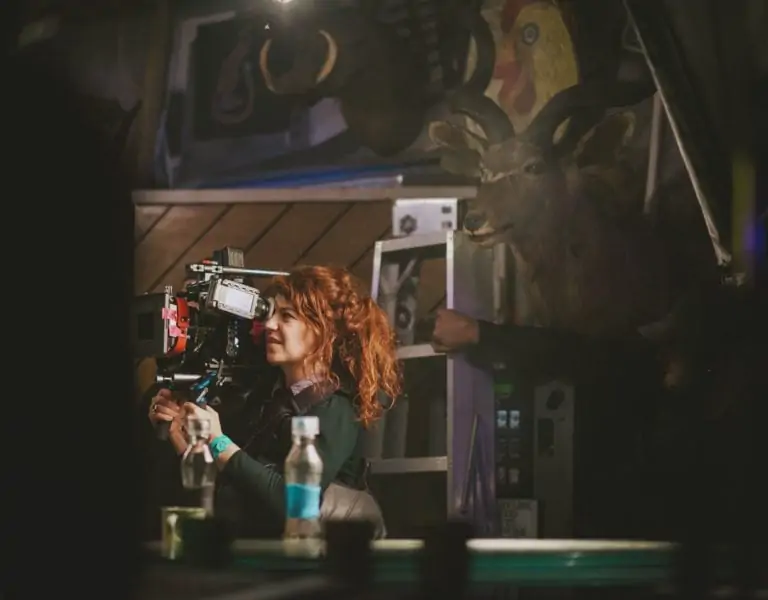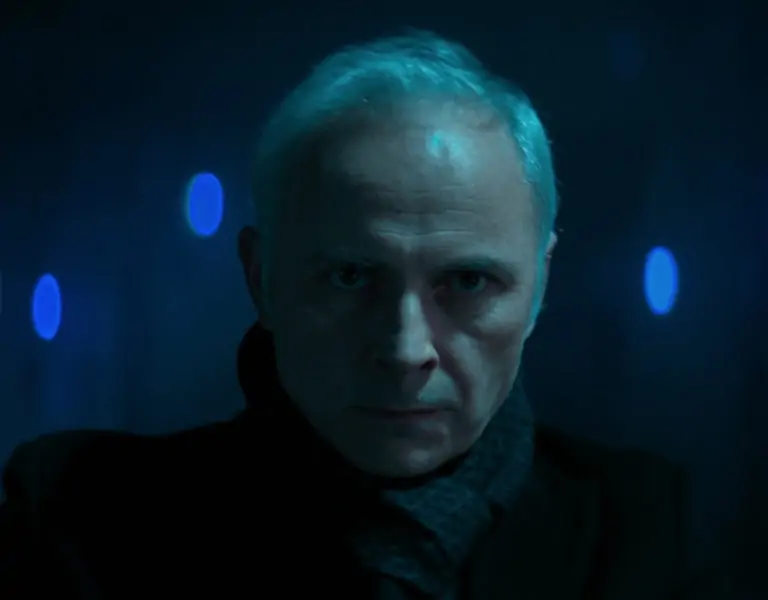UNKNOWN TERRITORY
I’ll start with a confession. I’ve probably seen about five horror films in my life, and most of them through my fingers. So, I was surprised and intrigued when my agent said that director Christopher Smith wanted to meet me for The Banishing, a feature in which a family are terrorised by the unquiet dead in an English vicarage during the second world war.
My previous features – an uncanny drama about hazing in Portuguese universities, a feminist Western set in South Africa’s Karoo desert – didn’t obviously point towards the chills, scares and genre tricks that horror fans love and take seriously. I wondered what had caught his eye.
When we met, I understood that Chris has a delight and playfulness in his visual storytelling which ranges incredibly wide. His references came thick and fast, delivered with equal and enormous enthusiasm, from The Shining to Last Year in Marienbad. He sees common ground in films whose genres seem miles apart and is irreverently happy to mash up elements from them all. Perhaps, with me, he was seeking someone with a fresh eye on horror who might help to take The Banishing’s visual language somewhere unexpected. The prospect of shooting a period piece alongside his readiness to play with visual codes had me hooked.
The horror of history seeps up through the floorboards and into the characters themselves, transforming reality and physics as it does so.
Sarah Cunningham

For The Banishing, we wanted to create an atmosphere of the uncanny in the context of the familiar English countryside. The pleasant vicarage, which promises a fresh start for Lionel (John Heffernan), his wife Marianne (Jessica Brown Findlay) and her child Adelaide (Anya McKenna-Bruce), soon reveals the murderous past beneath its foundations. The horror of history seeps up through the floorboards and into the characters themselves, transforming reality and physics as it does so.
My task was to lace the Georgian exteriors and labyrinthine interiors of Broughton Hall in the Yorkshire Dales with a sense of menace. I wanted the film, which is set in the early 1940s, to have a sense of historical distance – nothing too plasticky, hard or contemporary – so I shot on an ARRI Alexa Mini with Cooke Speed Panchros, whose forgiving yet vivid rendering of faces help generate an analogue feel, which I later heightened by adding grain. In general, I decided that I would resist the urge to fill, introducing the house as a place which soaked up the light. I would allow daytime interiors to fall off and night interiors to be lit with the small islands of light generated by practicals, all on dimmers of course. I found my set of Speed Panchros were relatively low-contrast so used only a tiny dosing of atmos. Occasionally in low-light situations I resorted to an eye light mounted on the camera, heavily gelled/NDed to reduce it to a sparkle in the eye.
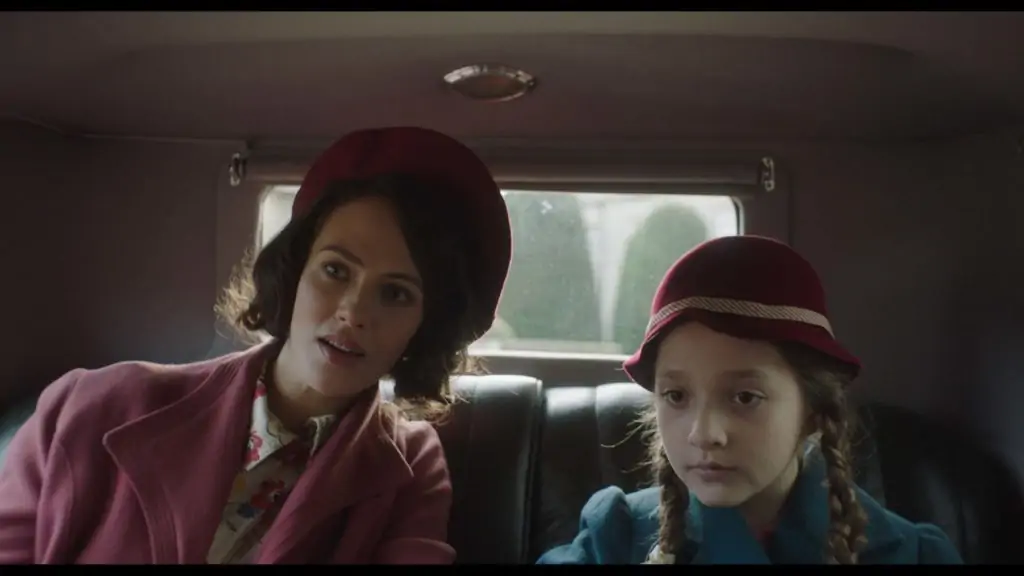
The house in the film is rambling and hollow, with a sense of constant brooding presence. We decided never to place the camera at eye height, apart from when handheld, so that our characters were always seen from slightly above or below, gesturing to the presence of restless spirits buried below the house or clinging to the ceiling. We filmed scenes through doorways and keyholes, always creating layers through which our characters were watched. Chris loves mirrors and doublings in his films, so we would often construct scenes with subtle hints of the later doublings to come, placing mirrors in shot so a character appeared multiple times.
A reference for me was Tarkovsky’s Mirror, with its space/time/dream/memory confusion and the transformation of the mundane into the sublime and uncanny. The blurring of multiple realities allowed us to play with physics too – I increasingly used dutch angles for the corridor sequences, and even a contra zoom for a dream sequence in the conservatory, where Marianne sees (or imagines) a terrifying act of violence. As the film’s tension mounted, I used wider and wider lenses on the faces of the haunted family, to give a sense of claustrophobia, distortion, and unease as the texture of reality shifts around them.
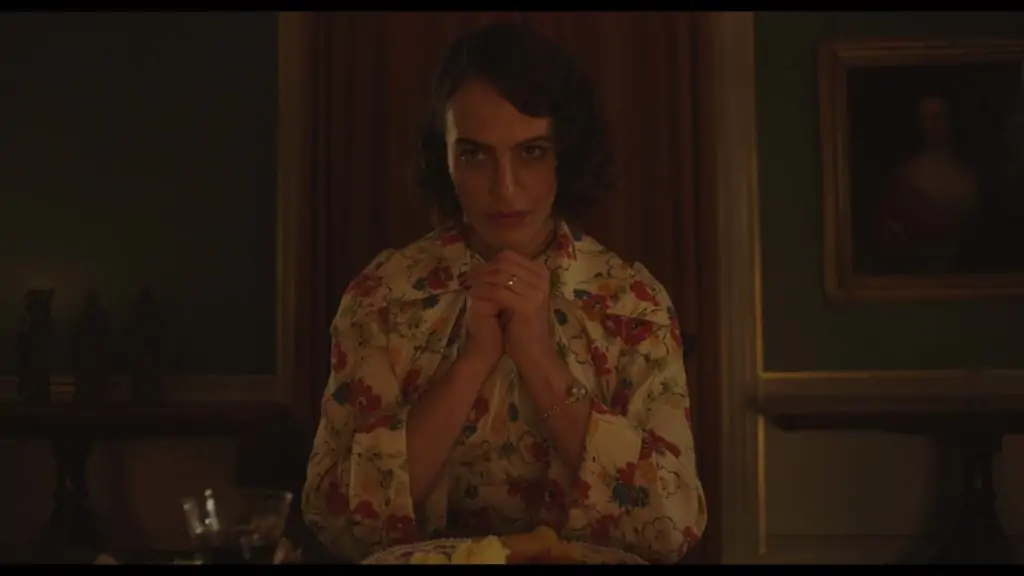
Oddly, the biggest challenges were some very low-tech torchlit sequences in which Marianne searches for her daughter in the house’s basement. These were shot in the cellars of Salts Mill in Saltaire, a cavernous, twisting space full of detritus and sudden drops. We wanted the darkness around Marianne to feel absolute, with the sense that something could jump from the blackness at any time, and our minimal lighting – torches, reflectors, and LED panels – meant we were often blundering around in the dark like the characters in the film. I think at one point Chris even attempted to light the characters with his iPhone!
I found shooting The Banishing very liberating creatively, allowing me to play with genre tropes which my indie background had not given me scope for. I may still watch it through my fingers, but I don’t rule out doing more horror in future.
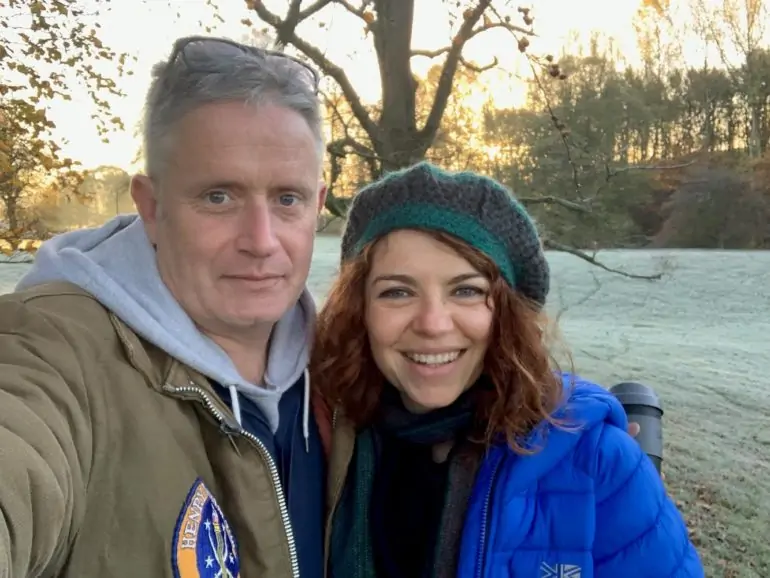
BY SARAH CUNNINGHAM
Sarah Cunningham is represented by Casarotto Ramsay & Associates.

